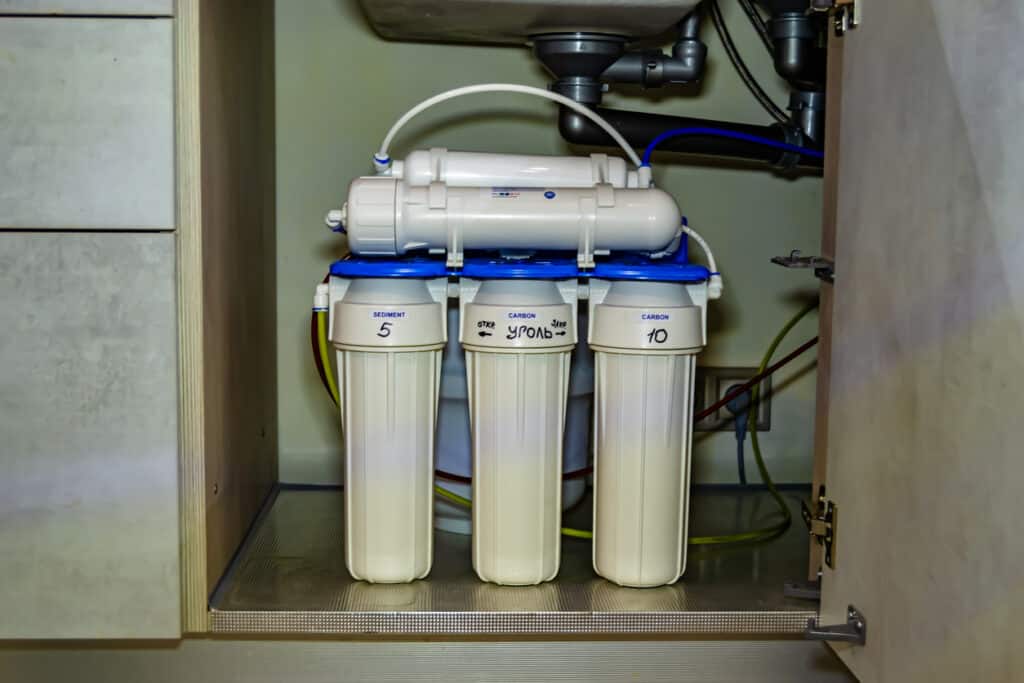Reverse osmosis (RO) systems are widely used for purifying water, ensuring clean and safe drinking water for households, businesses, and industries. These systems remove contaminants, impurities, and minerals from water, producing high-quality, pure water. However, mineral buildup can occur within RO systems over time, reducing efficiency and compromising water quality.
Understanding Mineral Buildup in RO Systems
Reverse osmosis systems are designed to remove from water minerals such as calcium, magnesium, and iron. However, certain factors can contribute to the accumulation of minerals within the system, leading to a phenomenon known as mineral buildup or scaling. This buildup occurs when the concentration of dissolved minerals exceeds their solubility limit, causing them to precipitate and form deposits on the RO membrane and other components. Mineral buildup can significantly impact the performance and longevity of the system, reducing water production, increasing energy consumption, and potentially damaging the membrane.
Preventing Mineral Buildup
Since this can be a serious issue, let’s take a look at ways to avoid it. We’ve broken them down for you here.
Regular System Flushing
Regularly flushing the RO system is an essential preventive measure to minimize mineral buildup. Flushing involves diverting a portion of the concentrated reject water (brine) back through the system to wash away accumulated minerals. This process helps maintain optimal water flow and prevents scaling. System manufacturers often provide guidelines on the frequency and duration of flushing, which may vary based on factors such as water hardness and system usage. Following these recommendations and implementing a routine flushing schedule can effectively help prevent mineral buildup.
Water Softening
Water hardness, caused by high levels of calcium and magnesium, is a common contributor to mineral buildup in RO systems. Installing a water softener helps reduce the concentration of these minerals, minimizing scaling potential. By addressing water hardness at the source, the RO system can operate more efficiently and maintain water quality.
Pre-Treatment and Filtration
Proper pre-treatment and filtration prevent mineral buildup in reverse osmosis systems. Sediment filters, activated carbon filters, and other pre-treatment methods remove suspended particles, chlorine, and organic compounds that can interfere with the RO process or contribute to scaling. Furthermore, specific antiscalant chemicals or cartridges can help inhibit mineral precipitation and protect the membrane from scaling. Consulting with water treatment professionals can assist in identifying the appropriate pre-treatment and filtration strategies for specific water sources and system requirements.
Monitoring and Maintenance
Regular monitoring and maintenance of the RO system are essential to prevent mineral buildup and ensure long-term water quality. Monitoring parameters such as feed water pressure, flow rate, and total dissolved solids (TDS) levels can help identify deviations from normal operation, enabling timely intervention. Additionally, inspecting the system for signs of scaling can indicate the need for cleaning or further preventive measures. Following the manufacturer’s guidelines for system maintenance is crucial for optimal performance and longevity.
Maintaining water quality in reverse osmosis systems requires proactive measures to prevent mineral buildup. By preventing mineral buildup, we can ensure the continuous production of high-quality, pure water, benefiting households, businesses, and industries. If you’re in or near Ocala, FL, reach out to Sunshine Water Systems for a reverse osmosis system by calling today for a consultation.






